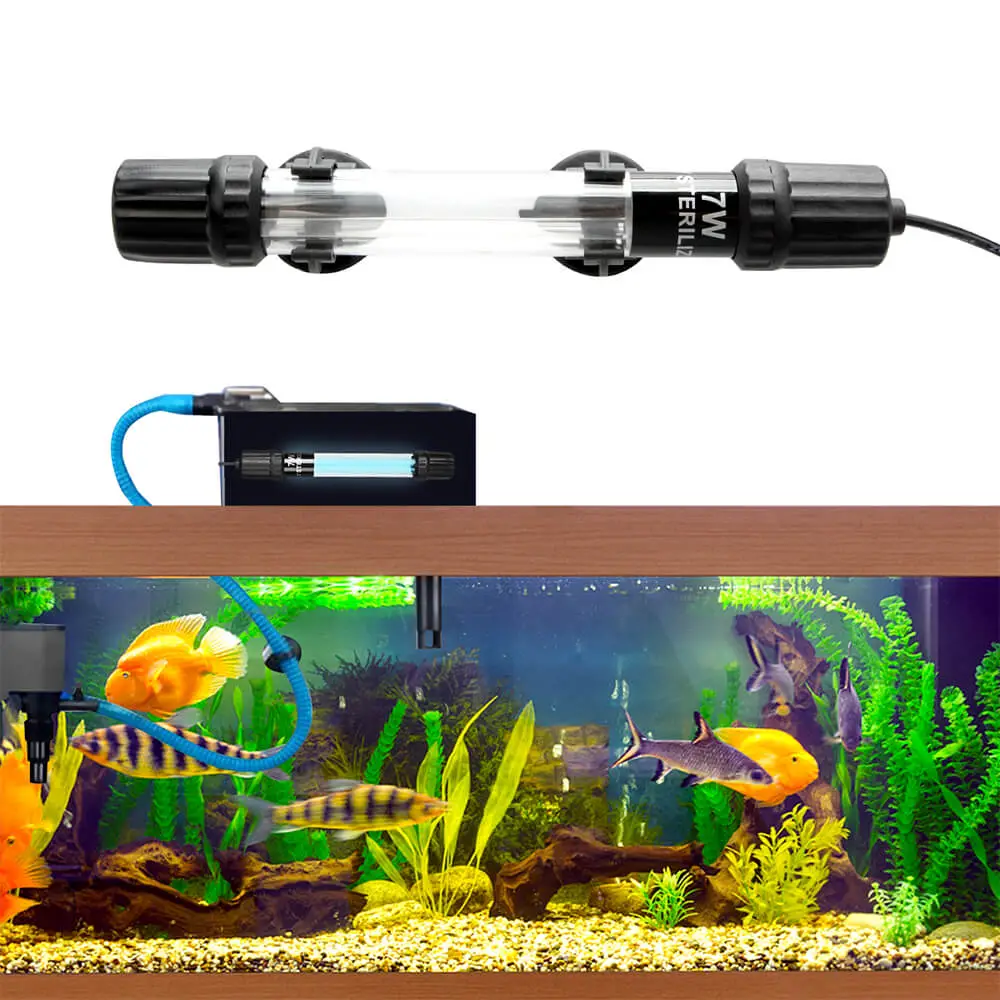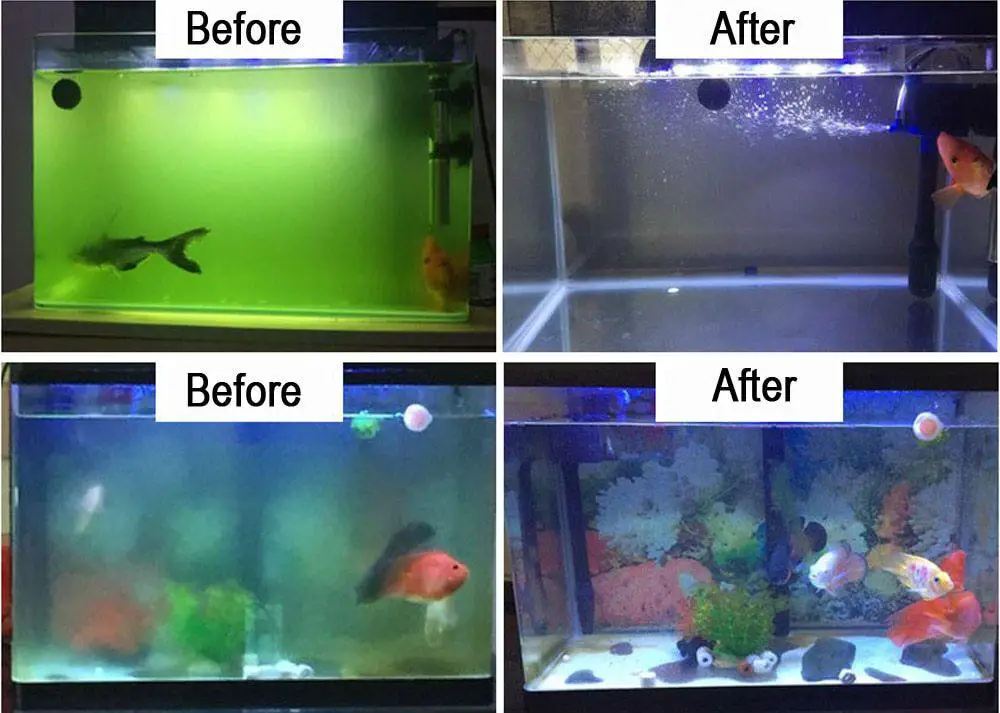Aquariums are more than just a beautiful addition to any room. They are a complex ecosystem that requires careful consideration and maintenance. One crucial aspect is UV light placement. Knowing where to put UV light in your aquarium can improve the quality of life for your aquatic creatures and enhance the overall aesthetic of your tank.
UV light helps eliminate harmful bacteria and parasites in the water, promoting a healthy environment for your fish and plants. But, placing the UV light in the wrong spot can cause more harm than good. In this article, we will explore the best locations for UV light placement in your aquarium, ensuring a thriving and beautiful aquatic world.
UV lights should be installed in a way that maximizes their effectiveness. It is recommended to place the UV light near the filter, where the water is flowing out of the filter and back into the aquarium. The water will then pass through the UV light, killing any harmful bacteria and parasites. Be sure to follow the manufacturer’s instructions for the specific model you have purchased.

Where to Put UV Light in Aquarium?
UV light is an essential component of any aquarium as it helps in reducing the number of harmful microorganisms in the water. However, many aquarium owners are unsure about where to place the UV light in the aquarium. In this article, we will discuss the different places where you can put the UV light in your aquarium, and the benefits of each location.
Inside the Aquarium
Placing the UV light inside the aquarium can be a great way to ensure maximum effectiveness. The UV light will directly kill any microorganisms present in the water as it passes through the light. However, this is not a recommended placement for all types of aquariums. It is best suited for larger aquariums where the size of the UV light is proportionate to the size of the aquarium.
One of the biggest advantages of placing the UV light inside the aquarium is that it helps in reducing the amount of algae present in the water. Algae requires light to grow, and the UV light will kill any algae present in the water. Additionally, placing the UV light inside the aquarium can help in reducing the number of harmful bacteria and viruses present in the water.
External Placement
External placement of the UV light is ideal for smaller aquariums where the size of the UV light is not proportionate to the size of the aquarium. It is also a great option for aquariums that have limited space. The UV light can be placed in the water pump or filter system, which will ensure that the water passes through the UV light before it reaches the aquarium.
One of the biggest advantages of external placement of the UV light is that it is easy to install and maintain. Additionally, it helps in reducing the amount of algae and harmful microorganisms present in the water. However, it is important to ensure that the water pump or filter system has the capacity to handle the flow rate required for the UV light.
Placement in Sump
Another popular option for placing the UV light in the aquarium is in the sump. The sump is a separate tank that is connected to the main aquarium and is used to filter the water. Placing the UV light in the sump ensures that the water passes through the light before it reaches the main aquarium.
One of the biggest advantages of placing the UV light in the sump is that it does not take up any space in the main aquarium. Additionally, it helps in reducing the amount of algae and harmful microorganisms present in the water. However, it is important to ensure that the flow rate of the water is sufficient to ensure that the water passes through the UV light.
Benefits of Using UV Light in Aquariums
There are several benefits of using UV light in aquariums, including:
- Reduces the amount of harmful microorganisms in the water
- Reduces the amount of algae in the water
- Improves water clarity
- Improves overall health of fish and other aquatic life
UV Light vs. Other Filtration Systems
UV light is not a replacement for other filtration systems, but rather a complement to them. While other filtration systems help in removing debris and waste from the water, UV light helps in reducing the number of harmful microorganisms present in the water.
One of the biggest advantages of using UV light in conjunction with other filtration systems is that it helps in reducing the amount of chemicals required to keep the water clean. Additionally, it helps in reducing the amount of time required for maintenance as it helps in reducing the growth of algae and harmful microorganisms.
Conclusion
In conclusion, the placement of the UV light in the aquarium depends on the size of the aquarium, the flow rate of the water, and the available space. Placing the UV light inside the aquarium is ideal for larger aquariums, while external placement is ideal for smaller aquariums. Placing the UV light in the sump is also a popular option. Regardless of the placement, using UV light in aquariums has several benefits and should be used in conjunction with other filtration systems.
Frequently Asked Questions
Keeping a fish tank can be a great joy, but it also requires some basic knowledge and attention. One of the important factors in maintaining an aquarium is having the right type and placement of lighting. Here are some common questions about where to put UV lights in an aquarium.
What is a UV light and why is it important for aquariums?
A UV light is a type of lighting that emits ultraviolet radiation. In an aquarium, UV lights are used to kill harmful bacteria, viruses, and other microorganisms that can be dangerous to fish and other aquatic life. They can also help to reduce the growth of algae and improve water clarity.
When it comes to placing UV lights in an aquarium, it’s important to consider the size and type of your tank, as well as the specific needs of your fish and plants. In general, UV lights should be placed near the filter or pump, where water is flowing through the tank.
What are the different types of UV lights for aquariums?
There are several different types of UV lights that are commonly used in aquariums, including submersible, hang-on-back, and in-line units. Submersible UV lights are designed to be placed directly in the water, while hang-on-back units are attached to the back of the tank. In-line units are installed directly into the plumbing of the tank’s filtration system.
Each type of UV light has its own advantages and disadvantages, so it’s important to choose the right one for your specific needs. For example, submersible units are often more affordable and easier to install, but they may not be as effective at killing bacteria as other types of UV lights.
How long should a UV light be on in an aquarium?
The amount of time that a UV light should be on in an aquarium depends on several factors, including the size of the tank, the type of UV light being used, and the specific needs of your fish and plants. In general, most aquariums require around 8-10 hours of UV light per day.
It’s important to note that too much UV light can be harmful to fish and other aquatic life, so it’s important to monitor the amount of light your tank is receiving and adjust accordingly. Some aquarium owners prefer to use a timer to ensure that their UV lights are only on for the recommended amount of time.
Can fish and plants be in the tank while the UV light is on?
Yes, fish and plants can be in the tank while the UV light is on. In fact, it’s important to have fish and plants in the tank while the UV light is on, as they can help to absorb any excess UV radiation that may be harmful to other aquatic life.
However, it’s important to monitor your fish and plants closely while the UV light is on, as too much UV radiation can be harmful to some types of fish and plants. If you notice any signs of stress or illness in your fish or plants, it may be necessary to reduce the amount of UV light or adjust its placement.
How often should UV lights be replaced in an aquarium?
The lifespan of a UV light in an aquarium depends on several factors, including the type and quality of the unit, how often it’s used, and the specific needs of your fish and plants. In general, most UV lights need to be replaced every 6-12 months.
It’s important to monitor your UV light regularly and replace it as needed to ensure that it’s functioning properly and effectively killing harmful microorganisms in your tank. If you’re unsure when to replace your UV light, consult with a professional aquarium specialist or refer to the manufacturer’s recommendations.

UV Light For Freshwater Aquarium – Necessary? (#KaveManClips)
In conclusion, the placement of UV light in an aquarium is crucial for maintaining a healthy environment for your aquatic pets. By installing the UV light in the correct location, you can ensure that harmful bacteria and parasites are eliminated from the water, leaving your fish and plants in optimal condition.
One important factor to consider when deciding where to put the UV light is the flow rate of the water in the aquarium. The UV light should be placed in an area where the water flow is strong enough to ensure that all the water is exposed to the light, but not so strong that the light is unable to effectively eliminate harmful organisms.
Another consideration is the size of the aquarium. A larger aquarium may require multiple UV lights to adequately cover the entire tank. Additionally, the location of any other equipment in the tank, such as filters or heaters, must be taken into account when deciding where to place the UV light.
Overall, proper placement of the UV light in your aquarium is essential for maintaining a healthy and thriving aquatic environment. By taking into account the flow rate of the water and the size and layout of the tank, you can ensure that your fish and plants receive the best possible care.
